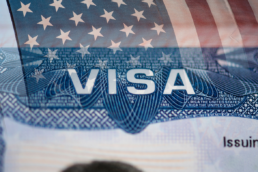There are several different paths one can take when attempting to move to and work in Canada. The Canadian government has many rules and regulations in place to control the flow of immigrants and workers coming to the country. Below, we will outline a few of the different main documents workers and employers will need to properly work in Canada, and the different paths employees and employers can take to successfully complete the process.
In many cases, a worker must have a positive Labour Market Impact Assessment (LMIA), a document that shows that there is a need for a foreign worker to fill the specific job and that no Canadian worker or permanent resident is available to fill the position. The employer may need this document before hiring a certain worker, there are some exceptions that will be detailed later, and it is up to the employer to file this document for the prospective employee. It should be noted that in Quebec, the provincial government also requires the employer to submit an LMIA to them as well as the Federal Government in Canada; failure to do so will result in a rejected application in the Quebec Province.
There are some job categories under different treaties Canada has with the U.S. and Mexico that allow certain applicants to immigrate to Canada and work there without procuring an LMIA or sometimes even a work permit. These types of permits are known as “Global Mobility Work Permits.” Usually, such permits are processed within two weeks’ time, however, because of COVID, this processing time can greatly fluctuate. On average, these types of permits also require a $230 fee.
To be eligible for a Global Mobility Work Permit, there are several different categories of eligibility based on which nation you are coming from. Below are the eligible applicants from the U.S. or Mexico under the International Mobility Program: Canada-United States-Mexico Agreement (CUSMA).
- Business Visitors: Anyone engaging in international business related to research/design, growth/production/manufacturing, marketing/sales, etc. These types of applicants must perform tasks that reflect components of the business cycle and do not require work permits
- Professionals: Business people who enter to provide pre-arranged professional services to Canadian companies, they must get a work permit
- Intra-Company Transfers: Applicant is employed in a managerial or executive capacity or possesses specialized knowledge in their field. They must be getting transferred to a Canadian enterprise, parent, branch, subsidiary, or affiliate, and must be already employed by the Canadian company to be eligible. A work permit is required.
- Traders & Investors: The applicant must carry on substantial trade in goods and services between the U.S./Mexico and Canada or have committed/will be committing a large amount of capital to their Canadian businesses. Must be employed in a supervisory/executive capacity involving essential skills. Work permit is required
When it comes to those applicants attempting to immigrate and work in Canada from the EU, the eligibility requirements differ from those under the CUSMA. The EU treaty differs slightly from the CUSMA. This treaty is known as the International Mobility Program: Canada-European Union (EU) Comprehensive Economic and Trade Agreement (CETA) and requires all applicants to be citizens of the EU. Under this agreement, there are multiple categories of applicants who may apply under this program and have their requirement for an LMIA waived. Those categories are:
- Business visitors/business visitors for investment purposes: The only difference between the CETA and CUSMA agreement for this category is that business visitors can also enter Canada to attend meetings, conferences, consultations, as well as training seminars, etc.
- Investors: The applicant must establish, develop, or administer the operation of an investment in an executive/supervisory capacity.They must also be the investor or employed by an enterprise that is committing/has committed substantial capital to Canadian businesses.
- Engineering and scientific technologists: These applicants have the same general requirements as the other position categories, but they are also required to have a 3-year post-secondary degree from an officially recognized institution in engineering or for scientists, a degree from an institution in the discipline of agriculture, architecture, biology, chemistry, physics, energy, etc. These applicants can stay for a cumulative period of no more than 12 months in any 24-month period.
- Professionals (contractual service suppliers and independent professionals): The applicant must not be engaged in the temporary supply of a service for a period not exceeding 12 months, they must also possess a university degree/professional qualification that demonstrate field knowledge to an adequate level.
- Contractual service suppliers must be engaged in the supply of a service on a temporary basis under contract, have been an employee of the EU-headquartered enterprise for at least one year prior to the application, and possess three years of experience in their field
- Independent professionals must be engaged in the supply of a service on a temporary basis as a self-employed person and possess at least six years of professional experience in their respective field.
After the UK seceded from the EU, a new treaty between Canada and the UK was drawn up, known as the Agreement on Trade Continuity between Canada and the United Kingdom of Great Britain and Northern Ireland (CUKTCA) [R204(a)] – International Mobility Program. The rules and categories are the exact same between the CETA and CUKTCA, other than that for the CUKTCA, the applicant must be a citizen of the U.K. and the codes that employers must enter are different. Make sure to check that you have the correct codes before submitting any applications.
The final type of work permit that the Canadian government grants is known as the Professionals and technicians – CPTPP [R204(a) – T52] – Agreements or arrangements – International Mobility Program, or the TPP Work Permit. These permits are very similar in requirements to those of Professionals and Technicians from the CETA but covers applicants for citizens of Australia, Japan, Mexico, and Peru. Again, the general rules for eligibility are like those of the CETA as are the education requirements, but you should check the Canadian government’s website on TPP Work Permits for the specific evidence required for an application.
Should your work permit expire, and you are waiting on the final decision of your application for permanent residence (APR), then Canada also has a program known as Bridging open work permits for certain economic class permanent residence applicants [R205(a) – A75] – International Mobility Program in order to keep eligible potential working immigrants in the country. You must have gone through the normal channels of submitting an APR in order to qualify for this program and provide evidence, all depending on what province you intend to, or reside in currently. More information on these requirements can be found on the Canadian Immigration Authorities’ website.
Finally, young people looking to gain experience and work in Canada for temporary periods of time are eligible to participate in the International Experience Canada [R205(b)] (exemption code C21) program. This program allows young professionals and students to take employment in Canada and gain experience in a foreign country.
Hopefully this guide on gaining a work permit to Canada was helpful to you. Be sure to subscribe to Berardi Immigration Law’s social media channels to stay up to date on all of the latest immigration related news!
Ready to have Berardi on your side?
Whether you’re a business looking to hire or a professional hoping to relocate, immigration law can be complicated. But you don’t have to do it alone. Put our experience to work for you.



